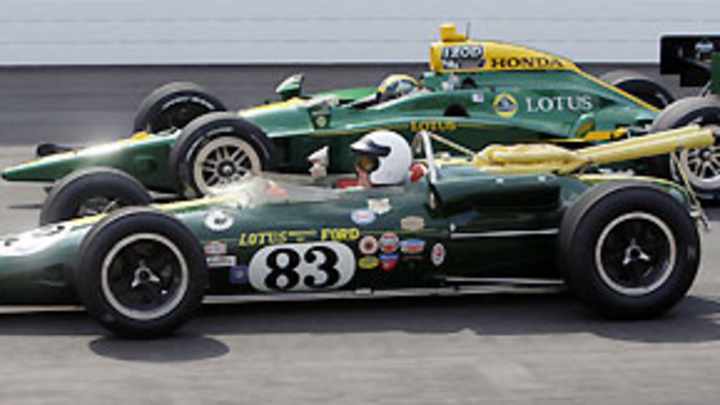Lotus to manufacture engines for IndyCar Series beginning in 2012

Lotus Cars of England has become the third engine manufacturer for the 2012 IZOD IndyCar Series season, SI.com has learned. An agreement between Lotus and IndyCar was signed Tuesday night, barely making the November 16 deadline the series had set for engine manufacturers to announce their intentions to participate in 2012, when IndyCar adopts the 2.6-liter, turbocharged engine formula.
This comes on the heels of last Friday's announcement in Indianapolis that Chevrolet would return to the series for the first time since 2005. Both engine manufacturers will join Honda Performance Development in the series.
The announcement will be made at 5 p.m. Thursday at the Los Angeles Auto Show, according to IndyCar sources.
KV Racing Technology was sponsored by Lotus with driver Takuma Sato. Kevin Kalkhoven is the co-owner of KV Racing along with former driver Jimmy Vasser and the owner of Cosworth, which will build the IndyCar engines for Lotus.
Vasser's team could be in position to become the lead Lotus team in IndyCar in 2012.
"I have heard that," Vasser told SI.com Wednesday afternoon. "Kevin is in England right now. It's great news for the future of IndyCar racing and just another rotation of the huge momentum that has been building over the last few years with the merger, IZOD becoming the series sponsor, with Honda, the new car and with Chevrolet. There are a lot of great things going on right now and things we've been waiting on for a while. It's very exciting. It's all positive for the sport."
Lotus first gained fame at in the Indianapolis 500 in the 1960s in Colin Chapman's Lotus Powered by Ford. The legendary Scotsman Jim Clark drove that car to victory in the 1965 Indianapolis 500 in the Type 38, leading virtually from the start, averaging 150.686mph -- at the time a new record.
Chapman built the first Lotus for competition in 1948. Lotus also achieved impressive success in Formula One.
Lotus introduced the Type 24 with a conventional chassis at the start of the 1962 Formula One season, but it was soon eclipsed by the radical Type 25. The 25 was the first F1 car to have a fully stressed "monocoque" chassis design -- something that is essential in today's IndyCars.
IndyCar Series CEO Randy Bernard was unavailable for comment but series officials were en route to Los Angeles for Thursday's announcement.
